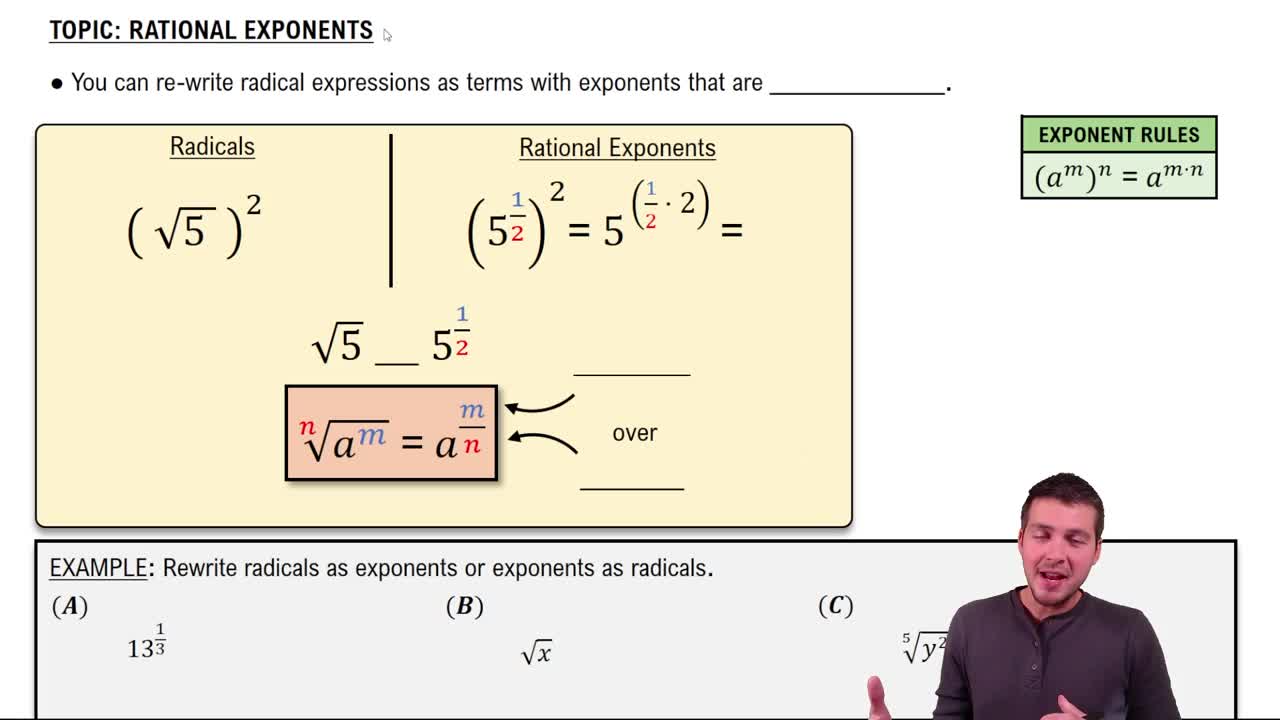Table of contents
- 0. Review of Algebra4h 16m
- 1. Equations & Inequalities3h 18m
- 2. Graphs of Equations43m
- 3. Functions2h 17m
- 4. Polynomial Functions1h 44m
- 5. Rational Functions1h 23m
- 6. Exponential & Logarithmic Functions2h 28m
- 7. Systems of Equations & Matrices4h 6m
- 8. Conic Sections2h 23m
- 9. Sequences, Series, & Induction1h 19m
- 10. Combinatorics & Probability1h 45m
4. Polynomial Functions
Zeros of Polynomial Functions
Problem 17
Textbook Question
In Exercises 17–24, a) List all possible rational roots. b) List all possible rational roots. c) Use the quotient from part (b) to find the remaining roots and solve the equation. x^3−2x^2−11x+12=0
 Verified step by step guidance
Verified step by step guidance1
Step 1: Identify the polynomial and its coefficients. The given polynomial is \(x^3 - 2x^2 - 11x + 12 = 0\). The coefficients are 1, -2, -11, and 12.
Step 2: Use the Rational Root Theorem to list all possible rational roots. The possible rational roots are the factors of the constant term (12) divided by the factors of the leading coefficient (1).
Step 3: List the factors of 12, which are \(\pm 1, \pm 2, \pm 3, \pm 4, \pm 6, \pm 12\). Since the leading coefficient is 1, the possible rational roots are \(\pm 1, \pm 2, \pm 3, \pm 4, \pm 6, \pm 12\).
Step 4: Use synthetic division to test each possible rational root from Step 3 to find one that results in a remainder of 0. This will confirm it as a root of the polynomial.
Step 5: Once a root is found, use the quotient from synthetic division to factor the polynomial further and find the remaining roots. Solve the resulting quadratic equation, if necessary, to find all roots of the original polynomial.
Recommended similar problem, with video answer:
 Verified Solution
Verified SolutionThis video solution was recommended by our tutors as helpful for the problem above
Video duration:
5mPlay a video:
Was this helpful?
Key Concepts
Here are the essential concepts you must grasp in order to answer the question correctly.
Rational Root Theorem
The Rational Root Theorem states that any rational solution of a polynomial equation, in the form of p/q, must have p as a factor of the constant term and q as a factor of the leading coefficient. This theorem helps in identifying all possible rational roots of a polynomial, which can then be tested to find actual roots.
Recommended video:
Guided course

Rational Exponents
Synthetic Division
Synthetic division is a simplified form of polynomial long division that allows for the division of a polynomial by a linear factor. It is particularly useful for finding the quotient and remainder when a polynomial is divided by a binomial of the form (x - r), where r is a root. This process helps in reducing the polynomial degree and finding remaining roots.
Recommended video:

Higher Powers of i
Factoring Polynomials
Factoring polynomials involves expressing a polynomial as a product of its simpler polynomial factors. This is essential for solving polynomial equations, as it allows us to set each factor equal to zero to find the roots. Techniques include grouping, using the quadratic formula, or applying special product formulas.
Recommended video:
Guided course

Introduction to Factoring Polynomials
Related Videos
Related Practice


